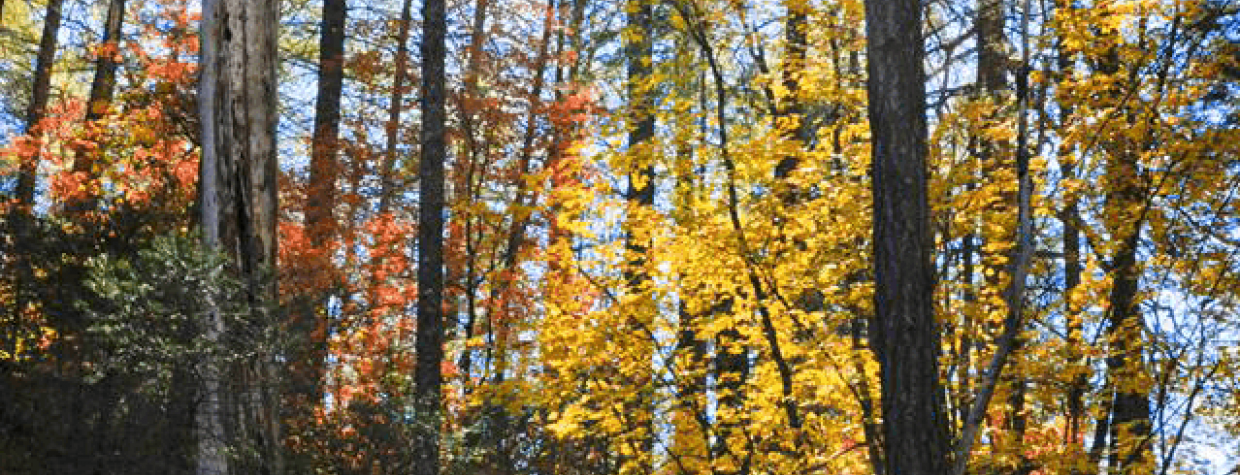Fifty years ago today, President Lyndon Johnson signed the Wilderness Act into law, protecting the United States' unspoiled wilderness areas from human encroachment. Today, we celebrate that landmark law with answers to some wilderness-related questions, courtesy of our friends at the National Park Service:
What is wilderness?
The Wilderness Act, signed into law in 1964, created the National Wilderness Preservation System and recognized wilderness as “an area where the earth and its community of life are untrammeled by man, where man himself is a visitor who does not remain.” The Act further defined wilderness as "an area of undeveloped Federal land retaining its primeval character and influence without permanent improvements or human habitation, which is protected and managed so as to preserve its natural conditions . . . ." Congress has now designated more than 106 million acres of federal public lands as wilderness: 44 million of these acres are in 47 parks and total 53 percent of National Park System lands. Additional national park areas are managed as “recommended” or "proposed" wilderness until Congress acts on their status.
How is wilderness different from other federal public lands?
Designated wilderness is the highest level of conservation protection for federal lands. Only Congress may designate wilderness or change the status of wilderness areas. Wilderness areas are designated within existing federal public land. Congress has directed four federal land management agencies—U.S. Forest Service, Bureau of Land Management, U.S. Fish and Wildlife Service, and National Park Service—to manage wilderness areas so as to preserve and, where possible, to restore their wilderness character. The Wilderness Act prohibits permanent roads and commercial enterprises, except commercial services that may provide for recreational or other purposes of the Wilderness Act. Wilderness areas generally do not allow motorized equipment, motor vehicles, mechanical transport, temporary roads, permanent structures or installations (with exceptions in Alaska). Wilderness areas are to be primarily affected by the forces of nature, though the Wilderness Act does acknowledge the need to provide for human health and safety, protect private property, control insect infestations, and fight fires within the area. Wilderness areas are managed under the direction of the Wilderness Act, subsequent legislation (such as the Alaska National Interest Lands Conservation Act), and agency policy.
Is designated wilderness necessary in a national park?
The wild, undeveloped areas of national parks (often called "backcountry") are subject to development, road building, and off-road mechanized vehicular use. National park backcountry is protected only by administrative regulations that agency officials can change. The Wilderness Act protects designated wilderness areas by law "for the permanent good of the whole people." With the Wilderness Act, Congress secures "for the American people of present and future generations the benefits of an enduring resource of wilderness."
What is the significance of wilderness?
Through the Wilderness Act, Congress recognized the intrinsic value of wild lands. Some of the tangible and intangible values mentioned in the Wilderness Act include "solitude or a primitive and unconfined type of recreation," as well as “ecological, geological, or other features of scientific, educational, scenic, or historical value." Wilderness areas provide habitat for wildlife and plants, including endangered and threatened species. Wilderness protects open space, watersheds, natural soundscapes, diverse ecosystems and biodiversity. The literature of wilderness experience frequently cites the inspirational and spiritual values of wilderness, including opportunities to reflect on the community of life and the human place on Earth. Wilderness provides a sense of wildness, which can be valuable to people whether or not those individuals actually visit wilderness. Just knowing that wilderness exists can produce a sense of curiosity, inspiration, renewal and hope.
How does wilderness designation in a park affect people?
Wilderness areas are places where humility and respect play a role in both individual and management activities. People can recreate in wilderness, though in most places individuals do so without mechanical transport. Visitors may hike, fish, camp, watch wildlife, photograph, or hunt (where legally authorized). Most park visitors will probably never enter into a wilderness area, yet they enjoy wilderness as a scenic backdrop to developed park areas.
All month, we're spotlighting Arizona's wilderness areas on the Arizona Highways blog. Check back this afternoon for another installment!

